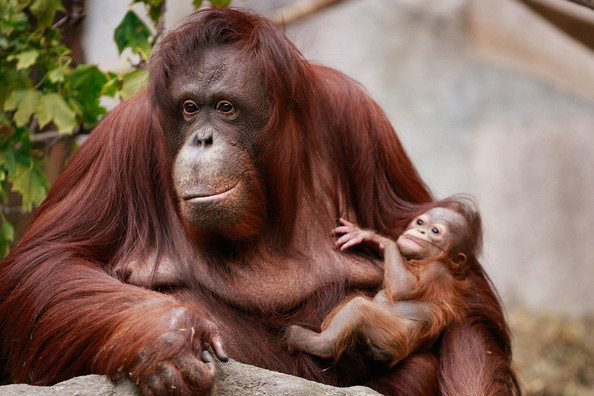Bornean Orangutan, Whale Whark, winghead Shark Slide towards Extinction

Gland, Switzerland, 04 Syawal 1437/09 July 2016 (MINA) – New IUCN Red List assessments reveal that growing human pressures on Borneo Orangutan, whale shark and winghead sharks are putting these species at an increasing risk of extinction. Whale sharks and winghead sharks are now listed as Endangered and Bornean orangutans as Critically Endangered – only one step from going extinct.
The Bornean orangutan is on the verge of extinction, while the world’s biggest fish, the whale shark, and a hammerhead shark species, the winghead shark, are endangered, a top conservationist body have said.
In an update to its Red List of Threatened Species, the International Union for the Conservation of Nature (IUCN) said growing human pressure was driving the three species ever closer to destruction.
“It is alarming to see such emblematic species slide towards extinction,” IUCN’s Global Species Program head Jane Smart said in a statement.
The Bornean orangutan, which along with its cousin the Sumatran orangutan are Asia’s only great apes, has moved from being classified as “endangered” to “critically endangered” — “only one step from going extinct”, IUCN said.
“As orangutans are hunted and pushed out of their habitats, losses to this slow-breeding species are enormous and will be extremely difficult to reverse,” IUCN assessor of the species Erik Meijaard said in the statement.
Bornean Orangutans ‘Could be Extinct Within 50 Years’
Around 100,000 of these great apes are estimated to live on the island of Borneo, which is divided between Malaysia, Brunei and Indonesia, down from 288,500 in 1973 and with their numbers expected to shrink to 47,000 by 2025.
The majestic creatures have seen their habitat shrink dramatically as the island’s rainforests are increasingly turned into oil palm, rubber or paper plantations.
Compounding the loss of habitat, surveys indicate 2,000 to 3,000 of the orangutans have been killed every year for the past four decades by hunters and sometimes villagers who view them as pests.
That represents a loss of as many as 66,570 individuals over a span of 40 years, IUCN said, warning the great apes could be extinct within 50 years.
“This is the first time in many decades that we have a clear understanding of Bornean orangutan population trends,” says Erik Meijaard, one of the assessors of the species, member of the IUCN SSC Primate Specialist Group and director of Borneo Futures – an initiative dedicated to preserving Borneo’s biodiversity.
“As orangutans are hunted and pushed out of their habitats, losses to this slow-breeding species are enormous and will be extremely difficult to reverse.” (T/R07/R01)
Mi’raj Islamic News Agency (MINA)



